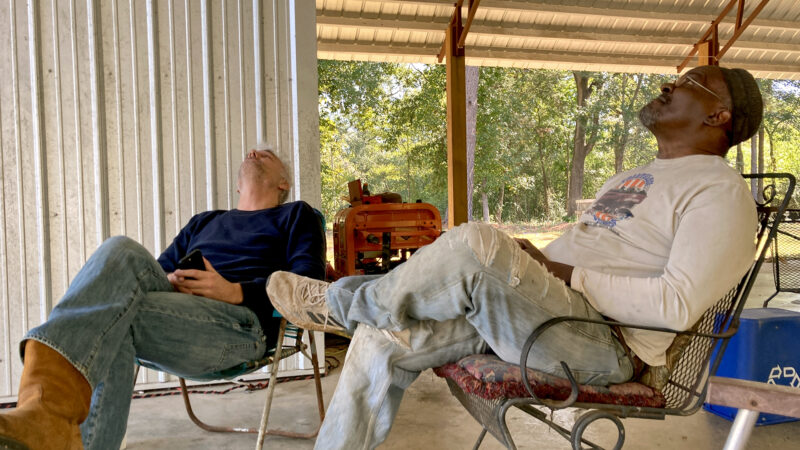What architects learned from 30 years of building affordable homes in Alabama’s Black Belt
Andrew Freear (left) and Reggie Walker (right) sit under a floating roof constructed by the Rural Studio in Hale County, Alabama on Oct. 18, 2023. Freear is the director of the Rural Studio.
Housing isn’t just a city problem.
While nearly a quarter of the country’s unhoused population lives in LA and NYC, rural communities also don’t have enough affordable housing. Last year, the percentage of rural residents experiencing homelessness jumped 10%.
Enter Auburn University’s Rural Studio.
The architecture studio has embedded itself in Alabama’s Black Belt for 30 years as a three-way benefit: residents get a free house, students attending the School of Architecture, Planning and Landscape Architecture learn through hands-on building and the school experiments with new ways of designing sustainable rural living to address the shortage.
The studio is now sharing the lessons it’s learned and its home designs with partners in a half dozen other states, including Louisiana.
Here are some lessons they’re passing on.
Multi-generational homes
The Rural Studio’s students don’t just learn from the award-winning architects instructing them, but also from the people they’re helping in Hale County where the project is based — like Reggie Walker.
Hale County has a population of about 14,000 people and sits in the Black Belt — an area of Alabama known for its rich soil and high poverty.
In 1981, Walker left and joined the military before moving back to his childhood home.
“Logic told me it’s better to be poor at home than poor in the big city,” Walker said.
But by the time of Walker’s homecoming, the house had not been lived in for years and needed to be torn down. Only the home’s fireplace still stands.
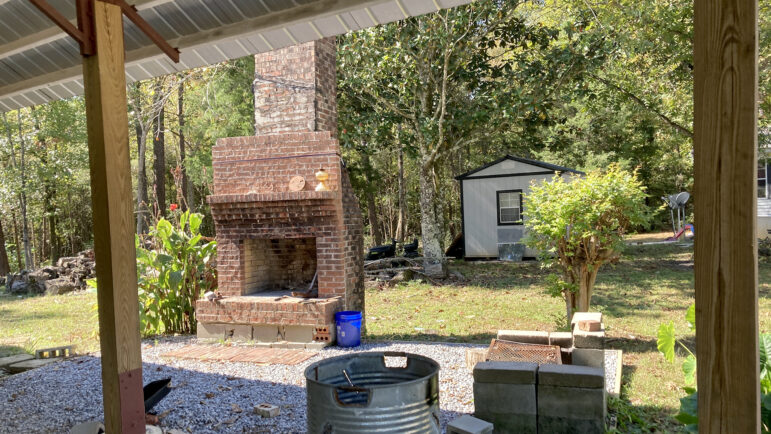
Outside of rural areas, homeowners sell their homes hoping to come out ahead. The average home seller has lived in their house for 10 years, according to the National Association of Realtors.
Rural homeowners are the exception to this. Generally, rural residents often hold on to their home and pass it on to their children. A major factor in this is the relatively low stock of rural housing.
“Most houses are passed down from generation to generation to generation,” Walker said. “But unfortunately, because people don’t have a lot of income, the houses actually become dilapidated, with people still living inside of them.”
Building a rural home means considering how to make sure it lasts across generations. Students from the Rural Studio had that in mind as they helped Walker tear down the old home and design a new one for him three years ago.
Designing homes to be modified
Walker told the students he just wanted a place to sleep, bathe and have a roof over his head. For the last wish, the students went a step further.
Rural homes are often modified to meet a family’s needs — like adding on to the home to make room for more inhabitants. But constantly cutting into the roof for renovations risks damaging it permanently.
The solution for Walker’s home: a detached roof. The students built two shed-sized structures, complete with a bedroom, bath, kitchen and more. Above that, they put up a large roof, unattached to either building, standing overhead along with a stretch of foundation. This allows Walker to add on and expand his home in the future without having to touch the roof.
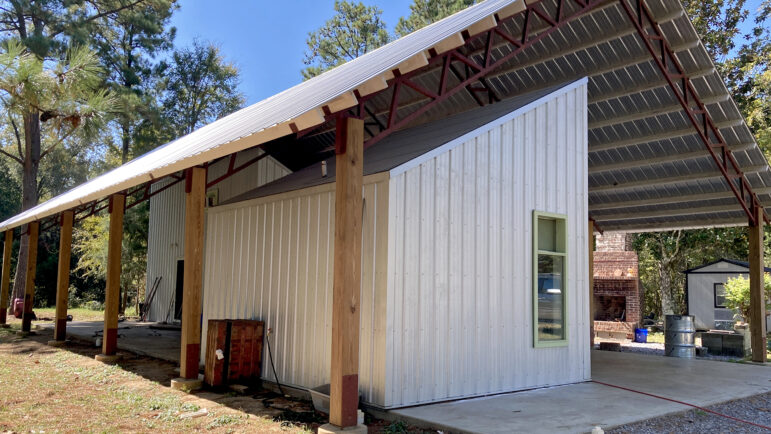
“That house can be modified, expanded, added onto, changed,” Rusty Smith, the Rural Studio’s associate director, said. “Without ever cutting it, without ever putting a hole in it, without breaking the waterproof barrier around the roof.”
The same need for flexibility applies to the interior design of these homes, where rooms aren’t given specific names. A room might serve as a guest bedroom one year, and a living room the next — or even as space for a home business.
The studio now builds its homes with this in mind, like placing exterior doors so that a long-term guest can have a private entrance in and out.
“One little move, like changing the door location, is a big deal,” said Andrew Freear, the director of the Rural Studio. “We try to do plans that don’t have rooms with names. We’ve really tried to be better about allowing our home occupants to decide the way that they’d like to live.”
Affordable doesn’t mean cheap
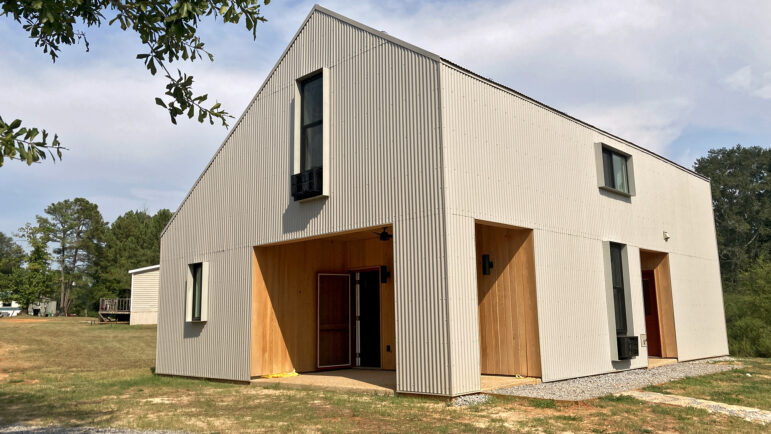
In the early days of the Rural Studio, Smith said the program focused on making their homes as affordable as possible, resulting in what the team called the “20K Project.”
While the nickname was not a hard rule, the Rural Studio regularly lived up to the challenge of only spending $20,000 on the materials needed for each project.
The challenge also taught them an important lesson: Building a “cheap house” by saving on materials doesn’t equal “affordable housing,” nor does it always save the homeowner in the long run.
“Sometimes, getting folks into a house that actually costs more to build is actually what’s the most affordable,” Smith said.
What Smith means is if an architect focuses solely on getting a home’s final cost as low as possible, they’ll skip on things like energy efficiency. But that’s ignoring how most people actually budget for a home — as a monthly expense through their mortgage. Once you consider homeownership as a monthly cost, other expenses can be factored in, like utility bills.
The studio figured out a cost-effective equation — spending $5,000 to make a house energy efficient pays for itself if it lowers the power bill by $25 a month.
That’s a win for everyone — the homeowner gets a more valuable house, a more valuable home is less risky for a bank to approve a loan and less energy gets wasted, so it’s a win for the planet.
A lack of infrastructure stops new home construction
Often, the biggest challenge to building more rural homes has little to do with affordability. Instead, it’s a shortage of services in rural areas, like fire departments.
That was the case in Newbern, the Black Belt town where the Rural Studio sits.
Houses were burning down at a high rate, so residents could not get home insurance. It also prevented them from getting mortgages to finance building a new home.
“A lot of these affordability issues aren’t about just making the house affordable,” Smith said. “It’s actually making it attainable.”
The Rural Studio’s solution was to construct a different kind of house in 2004 — Newbern’s firehouse.
The lack of infrastructure in towns like Newbern can also extend to sanitation. Local governments won’t sign off on a new building without a plan for dealing with its waste, and the type of clay in the Black Belt often causes on-site septic systems to fail.
To combat this, the Rural Studio is now experimenting with cluster-design sanitary sewers to be used for rural homes.
A need for temporary housing
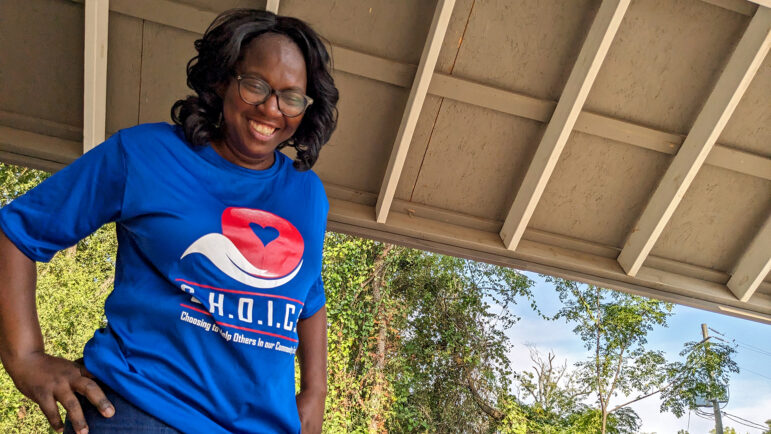
Smith and the other leaders of the Rural Studio saw their role as building permanent housing. But through the years, they have increasingly heard from community members that they needed temporary shelter, too.
Rural areas often lack social services infrastructure, and temporary housing can be especially sparse. People will often live in the woods, in cars or will stay with friends or family — sometimes illegally, depending on a lease. This is why rural homelessness is often described as “hidden.”
“In Birmingham… you’re going to see people on the street, right?” Emefa Butler said. “Anywhere you go in rural Alabama, most of the time you’re not going to see people living on the street. What you’re going to see is the people who are living with their cousins [and] uncles stacked in grandma’s house.”
Butler started her nonprofit, C.H.O.I.C.E., with the mission of providing wraparound resources to youth in Uniontown and Hale County. The nearest emergency shelter to Uniontown is 47 miles away, according to Butler, and the nearest hotel is only slightly closer at 22 miles. Butler said sending someone who needs short-term help to either option — away from their community and support networks — is not a good idea.
But now, there’s a closer option.
The Rural Studio built the C.H.O.I.C.E. House — a two-unit emergency shelter built by students last year. Two families can stay in the units for up to a month.
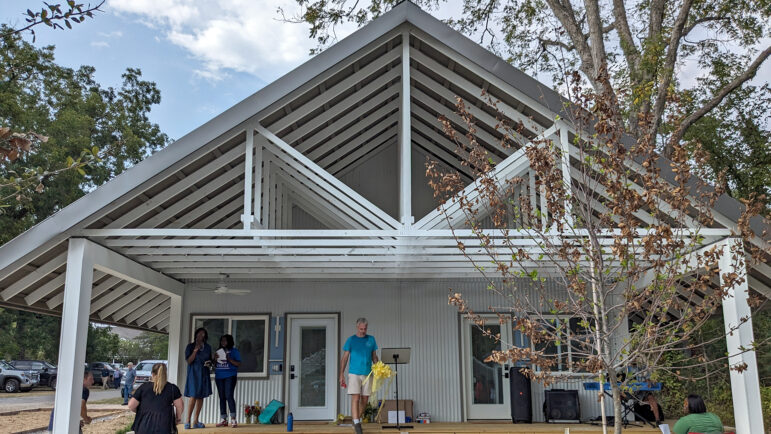
“In order to meet the long-term need, we felt we need to meet the short-term need,” Butler said. “A permanent fix, rather than paying for people to stay in hotels, is to build shelters.”
Sharing knowledge
The Rural Studio recently expanded beyond the Black Belt.
Last year, partners in half a dozen states built homes based on the studio’s prototypes, including the Habitat for Humanity in Greenville County, South Carolina and a home that was built in Lafitte, Louisiana.
Beyond assisting rural homeowners in and out of Alabama, students also leave the program with a unique experience. Few other architecture programs have students picking up hammers, let alone being part of a design from conception to construction.
A.C. Priest graduated from Auburn University in 2022 but stayed on as a student volunteer to finish constructing the C.H.O.I.C.E. House. Before then, she did not own a pair of work boots.
As she goes into the architecture field, her takeaway from her time with the studio is that these projects are about building community, because you never know when you’ll need a neighbor for a concrete finisher.
“Every single person matters in a project like this,” Priest said. “It’s never just you and your great, big ideas.”
This story was produced by the Gulf States Newsroom, a collaboration between Mississippi Public Broadcasting, WBHM in Alabama, WWNO and WRKF in Louisiana and NPR.
U.S. issues sanctions against United Nations investigator probing abuses in Gaza
The State Department's decision to impose sanctions on Francesca Albanese, the U.N. special rapporteur for the West Bank and Gaza, follows an unsuccessful campaign to force her removal.
New data reveals FEMA missed major flood risks at Camp Mystic
The data also highlights critical risks in other areas along the Guadalupe River in Kerr County, revealing more than twice as many Americans live in flood prone areas than FEMA's maps show.
Trump sets 50% tariff rate for Brazil, blasting treatment of former far-right president
President Trump defended former Brazilian President Jair Bolsonaro, who is accused of plotting an attempted coup following his loss in the 2022 election.
Former White House doctor declines to testify in GOP probe of Biden’s mental acuity
Kevin O'Connor cited doctor-patient confidentiality and his Fifth Amendment right against self-incrimination in deciding not to answer questions from Republicans on the House Oversight Committee.
Celine Song had too much fun as a matchmaker
Filmmaker Celine Song isn't religious, but that doesn't stop her from seeing certain dead insects as signs in her life and treating a good meal like prayer.
Diocese of San Bernardino issues dispensation saying Catholics who fear ICE don’t have to attend Mass
The diocese is the first in the U.S. to issue a special dispensation because of fears over immigration detentions.

